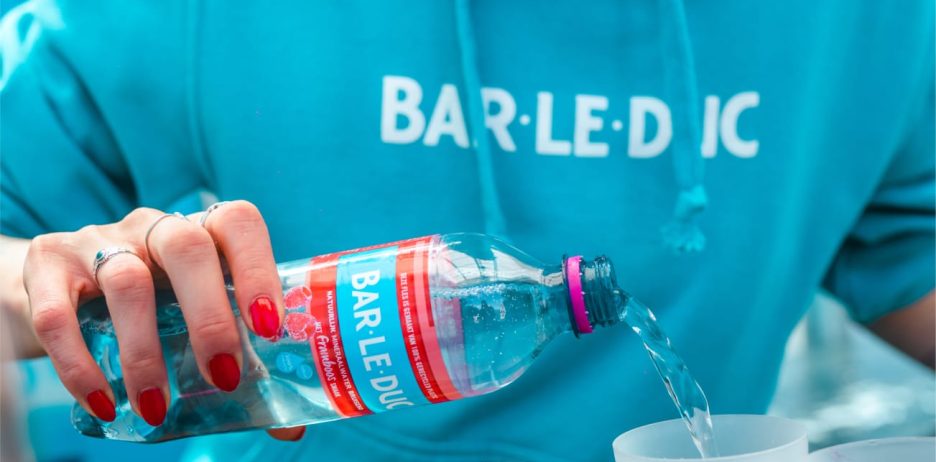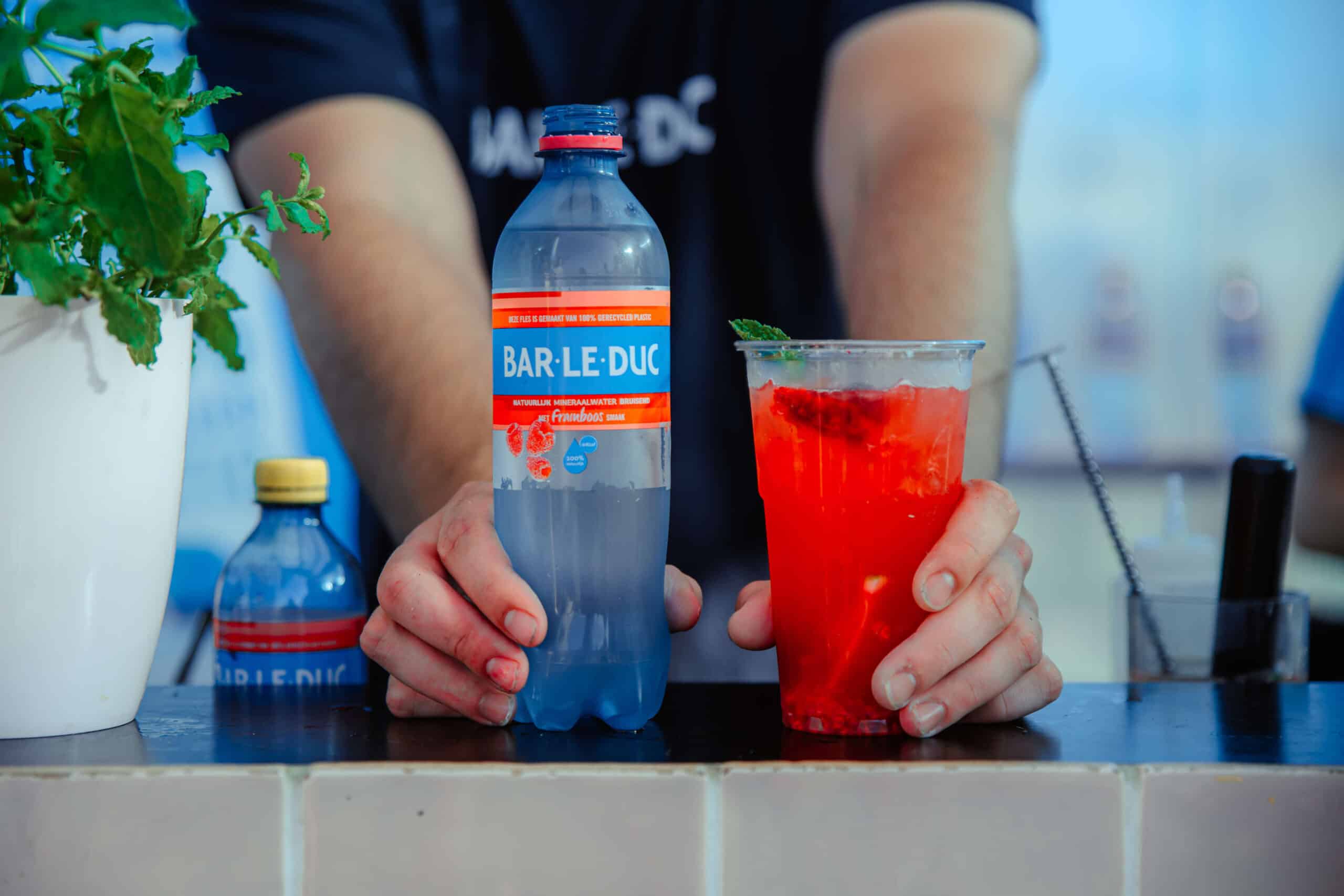The mineral content is indicated on the label of each pack of Bar-le-Duc mineral water, whether it is still or sparkling. This is a constant value and is regularly checked, as required by the Commodities Act.
The following minerals are listed on the label:
Calcium
This mineral helps with bone growth and the proper functioning of the nervous system and blood clotting. Bar-le-Duc contains 54 mg/litre of calcium.
Magnesium
Magnesium helps to transfer information from the brain to the muscles, fights fatigue and stress and is a natural relaxing substance. Bar-le-Duc water contains 3.7 mg/litre.
Sodium
This is the component of salt (sodium chloride). Natural mineral water can only be described as “suitable for preparing baby food” if its sodium content is less than 50 mg/l. The Bar-le-Duc water has a sodium content of 10.7 mg/l, well below this limit.
Potassium
This catalyst of the nervous system promotes muscle and heart contraction. It helps prevent muscle cramps. The potassium content of Bar-le-Duc is 0.7 gr/l.
Fluor
Natural mineral water, but also tap water, can contain fluoride, which is absorbed by the water from the soil. Many types of fluoride occur naturally as minerals. Fluoride helps prevent tooth decay, but too much can be dangerous. Fluoride is involved in the formation of the skeleton, but excessive amounts can make bones too stiff and brittle. Water with more than 1.5 mg of fluorine per litre must be labelled as “not suitable for regular use by infants and children under 7 years of age”. In addition, natural mineral water may only be labelled “suitable for preparing baby food” if its fluoride content is less than 1 mg/l. Analyses of Bar-le-Duc water have always shown that its fluoride content is below the detection limit of 0.1 mg/l: it is therefore not detectable.
Chloride
Chloride, like sodium, is a component of salt (sodium chloride). It helps with water movement in the body, the regulation of acid-base balance and the production of gastric juice. Bar-le-Duc contains 10.7 mg/l Chloride.
Sulphates
These have an effect on the intestinal flora, but beware: excessive consumption can cause diarrhoea. In Bar-le-Duc, the sulphate content is always below the detection limit of 2 mg/l.
Hydrogen carbonate
Hydrogen carbonate helps to neutralize acidity and thus stabilize the pH of the blood. In Bar-le-Duc, the level is 185 mg/l
Nitrates
This indicates how pure the water is.By law, in order to be considered potable, the content must not exceed 50 mg/l. Analyses of the Bar-le-Duc water always show that the nitrate content is below the detection limit of 1.0 mg/l for fluoride.
The pH value
Water can be more or less acidic. Or simply alkaline or neutral. This is expressed by the pH, or acidity, on a scale from 0 to 14. Water is neutral when the pH is 7, for example in pure water. A pH below 7 means the water is acidic. A pH greater than 7 means the water is alkaline (or basic). Drinking neutral water helps maintain the body’s acid-base balance. Bar-le-Duc’s pH is almost neutral at 7.5.
This value only appears on Bar-le-Duc still water. In the case of sparkling Bar-le-Duc water, we add carbon dioxide to the water just before it enters the bottle. This carbon dioxide causes the pH to drop from its original level to around 6.
The dry residue
The dry residue is the substance that remains after all the water has evaporated when the water is heated to 180°C. This is the mineral content expressed in mg/l. The higher this content, the more mineralised the water. To be used in baby food, this content must be less than 500 mg/l. The water of Bar-le-Duc has a dry residue of only 230 mg/l. Bar-le-Duc is therefore naturally low in minerals.
Hardness
The hardness of water is determined by the amount of calcium and magnesium it contains. These elements are mainly found in rocks such as lime and chalk and are naturally present in groundwater. The more of these minerals there are in the water, the harder it is. The total amount of minerals also determines the hardness of the water. This is expressed in degrees of German hardness. Bar-le-Duc has a degree of German hardness of 8.4, which is about average for Dutch drinking water.
Iron and Manganese
Water as it comes from the source contains a limited amount of iron and manganese. Too high a content causes a defect in taste and colour. These substances are removed in our factory by the only treatment allowed by law for natural mineral water: successive aeration with sterile filtered air, followed by filtration with sand filters. The iron and manganese are converted into iron oxide and manganese oxide, which are then removed from the water by the sand filter. This process is constantly monitored to ensure that the iron content falls below 0.1 mg/litre. The maximum permitted level is 0.2 mg/litre. Manganese is below 0.005 mg/litre, well below the legal limit of 0.050 mg/litre.
Carbonic acid
There are natural sparkling waters that absorb gas as they travel underground, but this is not the case with Bar-le-Duc: the water naturally contains no carbon dioxide. Bar-le-Duc sparkling water is mineral water to which carbon dioxide has been added just before bottling. This carbon dioxide lowers the pH of the water to around 6.





